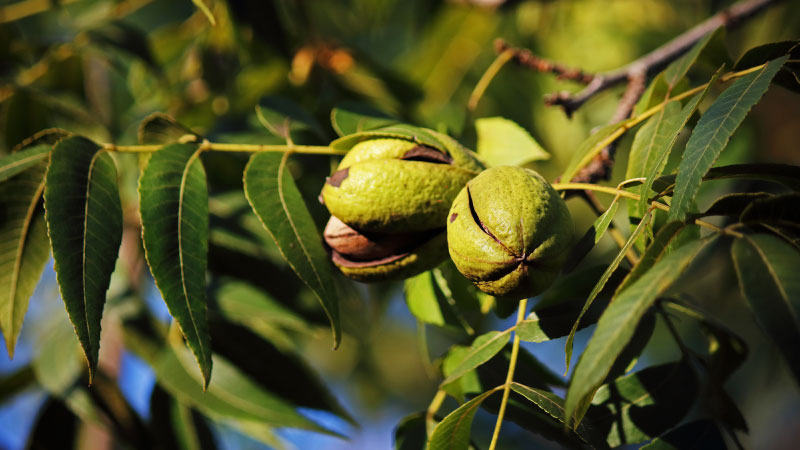Developing A Brown Rot Resistance Kit

This year Georgia and South Carolina peach growers will have a new weapon against fungicide resistant brown rot — a portable kit that will let them know which materials not to spray.
In years with normal rainfall, brown rot, caused by the fungus Monilinia fructicola, is one of the most economically crippling diseases for peaches. Blossoms infected with the fungus turn brown and cling to the twig in a gummy, spore-filled mass, and young twigs often die as a result. Fruit eventually shrink into gooey, brown mummies.
Early and mid-season fungicide sprays with protective fungicides during a moist spring and two or three additional sprays prior to harvest with proper fungicides will typically protect a crop from this disease. But one humid spring in 2002, several peach growers in Georgia applied their regular fungicide program, only to find that the disease had whipped through their orchards anyway, crippling their yield. The loss in revenue was substantial.
The massive spread of disease led plant pathologists Guido Schnabel of Clemson University and Phil Brannen of the University of Georgia to believe that the fungus might be developing resistance to fungicides. After collecting samples and conducting analyses, they concluded that the fungus had indeed become resistant to the sterol demethylation inhibitors (DMIs), the most widely used chemical class of fungicides. In addition, resistance to the benzimidazole (BZI) fungicides still lingered in Georgia and South Carolina orchards. So, to help growers determine which fungicides would work, Achour Amiri of Clemson University in collaboration with Schnabel, Brannen, and Harald Scherm from Clemson University and the University of Georgia, developed a new monitoring kit, equipped with lipbalm tubes filled with three different fungicide “chapsticks.”
Using The Kit
Intended to mirror lab testing on site, the “lipbalm kit” contains tubes, Petri dishes, toothpicks, and razor blades — everything an Extension agent needs to perform the test in the local county Extension office. The content of the “lipstick” is a mixture of fungal growth-supporting agar gel and fungicide. The kit contains four different lipbalms — three with different fungicides and one control containing pure agar. The fungicide tubes hold a DMI fungicide, a BZI fungicide, or a Quinone outside Inhibitor (QoI) fungicide. With the kit, an Extension agent can determine the resistance profile of the brown rot fungus at a minimum of five locations and determine which fungicide will not work. Development field testing of the kit was funded under two USDA Regional Integrated Pest Management Grants.
To use the kit, the user twists the gel from the four different fungicide-filled lipbalms, cuts off several slices, and organizes them into sections in a Petri dish. Then he or she collects samples of infected blossoms or fruit, scrapes off some of the fungal spores with a toothpick included in the kit, and swirls the spore-covered toothpick in the center of each agar slice. After three days, the presence of fungal growth on the slices indicates which fungicide the disease will resist.
While the kit tests for the presence of resistance, Schnabel and Chao-Xi Luo of Clemson University and Kerik Cox of Cornell University delved further to determine the mechanism of resistance and how prevalent the DMI-resistant fungus was. They tested “isolates,” or samples, of the brown rot fungus from several peach-growing states. They showed that the resistant fungi existed in at least four states: Georgia, South Carolina, Ohio, and New York. In addition, the resistant version of the fungus was genetically different from the sensitive version.
“The resistance mechanism is identical in resistant isolates from Georgia, South Carolina, Ohio, and New York; they are genetically related,” Schnabel says. “That means that resistance probably developed in one location and spread from there. Furthermore, resistant isolates are not genetically identical, indicating that DMI resistance may have developed decades ago.”
Field Testing
After training workshops in April 2008 in Byron, GA, and Clemson, SC, Extension agents in Georgia and South Carolina gave the kits a trial run in 28 orchards last summer. Although brown rot symptoms were scarce because of the continuing drought last year, residual infection from minor outbreaks gave agents the samples they needed. The kit revealed DMI and BZI resistance in several orchards, and even occasional reduced sensitivity to QoI fungicide. The tests proved what Schnabel’s team had been hoping: county agents had no trouble using the kit and determining resistance profiles in grower locations.
Some of the results surprised Schnabel and his team; growers that alternated DMI and QoI fungicides did not “select” less for resistance than growers spraying only the one or the other chemical class exclusively. “We learned that when growers spray a program based on either DMI or QoI fungicides alone, that they rapidly select for resistance,” Schnabel says. “When they alternated the two chemical classes, they still selected for DMI and QoI fungicide resistance at the same rate.”
Because of the historical fungicide resistance to the BZI fungicides, few growers use them. The 2008 field test showed that BZI resistance exists but is not widespread. With existing DMI resistance and emerging QoI resistance, Schnabel and his team are testing possible alternatives. Resurrecting the use of BZIs may be one solution.
While the kits proved to be effective without revision, the extensive time commitment to hunt for brown rot symptoms necessitated some changes to the way samples are collected. Next year, Schnabel plans to divide the field test into two phases. Phase 1 will involve disease scouting by the growers themselves, followed by county agent testing of suspicious samples. Based on these early findings, Schnabel will make recommendations for late fungicide treatments. Phase 2 will occur later in the season, so recommendations will have to be implemented next year.
While Schnabel doesn’t like to hope for another dry year, he says that it may give his team more time to find a spray treatment to supplement the three current fungicide classes. With a wet spring, last year’s resistance could mean this year’s outbreak.









